I was trying to map the 360 video pixel coordinate to sphere surface coordinate but I couldn't get right result... It just mapped to the wrong position I already know the points of the XY data for 360 video pixels.
how map 2d grid points (x,y) onto sphere as 3d points (x,y,z)
I checked this link and I copied method from this but what I'm getting is not mapped to the desired position.
How can I get radius from the pixels?
I am not sure if I'm passing right radius for imageRadius but I thought it will be circumference/PI to get radius and the video ratio is 4096x2048. I also tried to pass the number 1 because UV is 0-1 but it was not right...
Is Method wrong?
Maybe the method is wrong. I passed random numbers into the imageRadius but couldn't get the right position... If I make X to negative number the seems like little bit closer to result....?
Current Result
https://youtu.be/t0I7Hlb-tbk It mapped to up right position with the method that I found online...
Project File
https://drive.google.com/a/swordfish-sf.com/file/d/0B45RYzVs0t0_VVdaaHdmNHRWTk0/view?usp=sharing If somebody can check the Unity project file that will be great...
Current Code
public class mapScript : MonoBehaviour {
public int input = 4098;
float imageRadius = 4098f / Mathf.PI; //2098? 3072? 4098?
float radius;
public GameObject testSphere;
void Start () {
radius = this.transform.localScale.x;
}
void Update () {
imageRadius = input / Mathf.PI;
int currentFrame = (int)this.GetComponent<VideoPlayer>().frame;
testSphere.transform.position = MercatorProjection(mapVals[currentFrame,0],mapVals[currentFrame,1]);
}
Vector3 MercatorProjection(float xVal, float yVal)
{
float lon = (xVal / imageRadius);
float lat = (2 * Mathf.Atan(Mathf.Exp(yVal / imageRadius)) - Mathf.PI / 2);
float calcX = radius * Mathf.Cos(lat) * Mathf.Cos(lon);
float calcY = radius * Mathf.Cos(lat) * Mathf.Sin(lon);
float calcZ = radius * Mathf.Sin(lat);
Vector3 result = new Vector3(calcX,calcY,calcZ);
Debug.Log(result);
return result;
}
float[,] mapVals = new float[,] {
{1969.21f, 928.625f},
{1969.6f, 928.533f},
{1968.92f, 928.825f},
{1968.68f, 929f},
{1968.47f, 929.067f},
{1968.41f, 929.025f},
{1968.48f, 928.992f},
....
};
}
Thank you.
